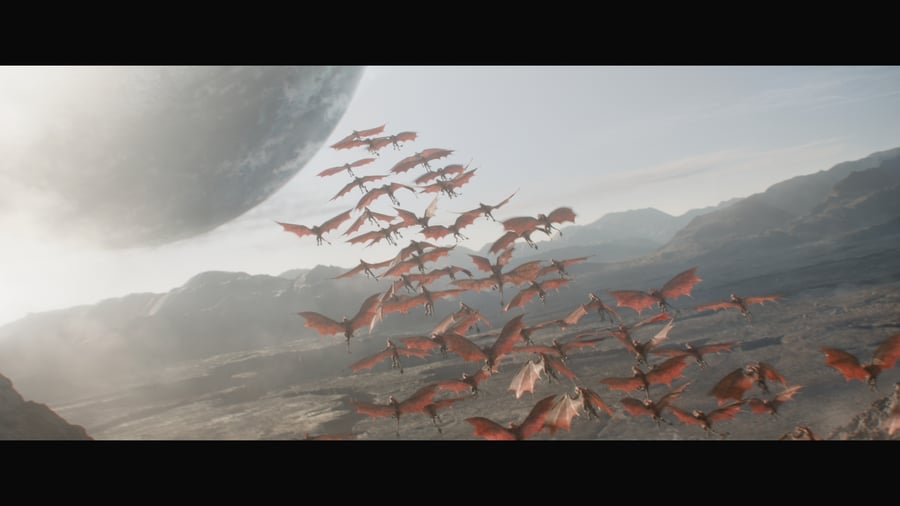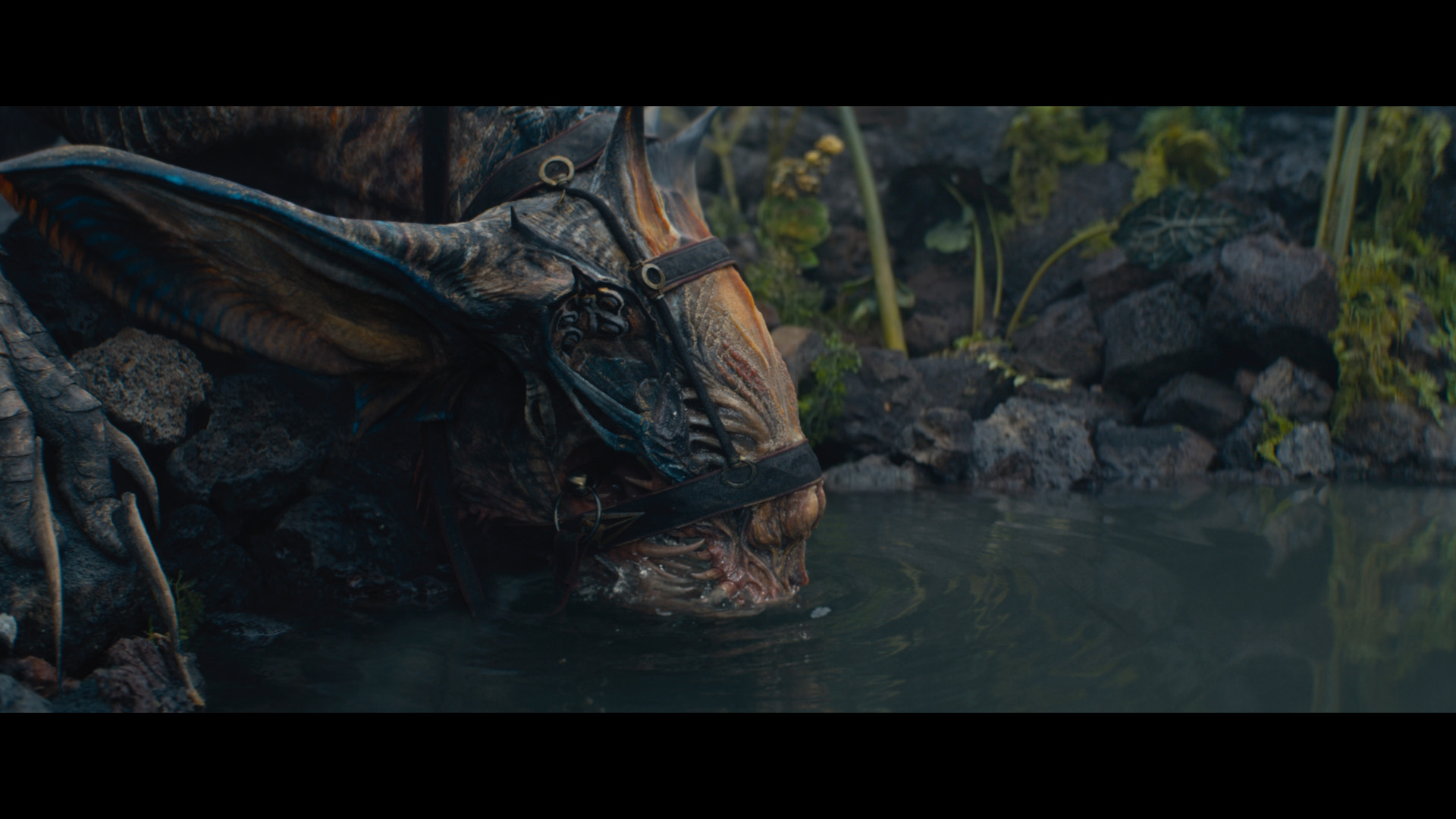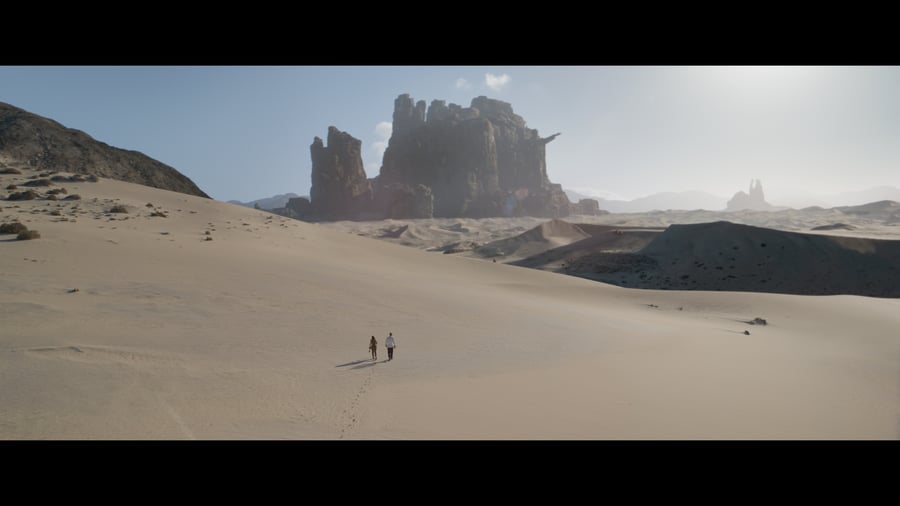Adam Tamblyn is a Toronto-born visual effects artist currently working at Framestore in Montreal, Quebec, Canada. The roto/paint artist heavily relies on Boris FX Silhouette to tackle advanced roto and matte building on high-profile projects, along with sister product Mocha Pro. His recent credits include Foundation, Peter Pan & Wendy, The Batman, and Stranger Things.
How did you get your start in the industry?
I’ve known that I wanted to work in film & episodic post-production before I really knew what that meant. I only had a vague direction that I wanted to work in a VFX-related field when I graduated college, but I eventually found a passion in working with compositing and got started working on stereo conversion in order to learn Nuke and Mocha Pro. I spent the next five years working in studios in Toronto, getting to be a part of some huge projects and meeting some incredibly talented people before the world turned upside down in 2020, and I decided to roll with the changes and move to Montreal.
What type of tasks do you look to Silhouette to help with on a daily basis?
For rotoscoping and matte building, there’s no substitute for Silhouette. I had to work my way through a number of other compositing programs first, and while they all have their various strengths, Silhouette is the fastest and most intuitive program I’ve ever sat down with. The speed at which Silhouette handles even the most demanding roto tasks is incredible.

Peter Pan & Wendy (Disney+), courtesy of Framestore
What Silhouette feature do you use most — and why?
The feature I use the most in Silhouette is, no surprise, the rotoscoping. I had a shot earlier this year with hundreds of roto shapes, splines, and layers, operating together to separate a foreground character from the background — a task that would need several different subtasks and files to accomplish in other compositing programs. In Silhouette, however, I can flip between different view modes at the push of a button, isolate certain regions, and make changes to my shapes almost on the fly. I can also create new tracks and edit my existing keys in the dope sheet in real-time.
What is the most difficult shot you’ve ever worked on using Silhouette?
During the second season of Apple TV’s Foundation, I had to create a character roto that was hundreds of frames long with rippling cloth, blowing hair, and camera movement. It was hundreds of shapes worth of animation, and in any other program, I’d have to carve the project into many smaller tasks just to be able to manage working on the character. With Silhouette, however, I was able to easily manage the strain on my computer while working and then render out the full-quality matte afterward. It was eye-opening for me.

Foundation, season 2 (AppleTV+), courtesy of Framestore
Do you use any other Boris FX tools in addition to Silhouette?
I first learned tracking in Mocha Pro, and it’s still my go-to tracking program when I need a tracker to import into Nuke. It doesn’t quite combine everything I need in a rotoscoping workflow the way that Silhouette does, but it’s reliable and quick to bring into my Nuke workflow when the native tracker won’t cut it.
What project are you most proud of — and why?
It’s so hard to narrow it down! I’m very proud of my work on Game of Thrones, The Expanse, and, more recently, Foundation. Working on popular television shows is always fun to hype up with your friends, but with all of these shows, I had certain shots that I was thrilled to point to and say, “I was a part of that! That’s mine!” I get excited to explain to other people how the shot was accomplished and point out all the little things that they didn’t even notice when they were watching the first time. The most rewarding reaction is when someone doesn’t even realize that any changes were made to the shot until you list all the hard work that went into the sequence from behind the scenes.
How do you prep before a big project?
Before a big project, I’ve begun to go through the sequences as a whole with my lead, looking at what each series of shots is trying to accomplish, and how they fit together. This is really useful for understanding what the final look of each sequence is going to be, and it lets me narrow my focus down to what we need to get the shot to final.
What's a keyboard shortcut you can't live without?
In Silhouette, being able to flick through my Output, Foreground, and Color Comp view modes with the press of a button is a lifesaver. In addition, if you’re like me and need to change up what you’re looking at, use the semicolon key to invert your alpha in the Output layer and spot those missing edges that you didn’t notice before.
How do you keep yourself fueled when you're in an epic session?
Are we counting coffee?! I usually have a cup or three when I’m really feeling the groove, but if I’m being honest, it isn’t what I’m munching on that keeps me on temp when I’m painting or rotoing. It’s what I’m listening to. I strap on a pair of headphones and let music become the soundtrack to the shot I’m finishing.
 Foundation, season 2 (AppleTV+), courtesy of Framestore
Foundation, season 2 (AppleTV+), courtesy of Framestore
Where do you turn for artistic inspiration?
A lot of the time, I look to what others are doing in film and television series for inspiration. There’s a lot of incredible VFX work being done, and if you have the time and the good fortune, you can even find artist interviews and breakdowns uploaded to streaming platforms.
What do you do when you start feeling creative burnout?
I lean on other creatives! When I start feeling the drag of a long project, I listen to new podcasts, watch new shows, and find new artists to follow on social media. Music, podcasts, books, television, movies — as long as you can relax and engage with something fresh, you can reset your mind and get back into a positive groove for when you head back to work.
What's your favorite film and/or TV series?
My favourite film is Mad Max: Fury Road; in my opinion, it’s one of the best examples of all of the elements of filmmaking combined in the best possible way. What’s more, it’s exciting, a visual spectacle, and the most fun I’ve had watching a movie in a theatre, and at the end of the day, that's why we do what we do!
 Foundation, season 2 (AppleTV+), courtesy of Framestore
Foundation, season 2 (AppleTV+), courtesy of Framestore
If you could collaborate with any artist, living or dead, who would it be and why?
I’d have to say, Guillermo del Toro. Aside from enjoying his incredible work on Pan’s Labyrinth, The Shape of Water, and Pinocchio, I had a chance to visit his “At Home With Monsters” exhibit at the AGO in Toronto, and it really highlighted how much research, inspiration, and care goes into all of his creative work.
As an artist who lives behind the camera, I love being part of projects where I can tell that a director is pouring a lot of thought and passion into the film. It makes me feel like the little touches I add here, and there are adding to something that can reach through the camera and really move people. Plus, his visual style is a lot of fun!
What career and/or life advice would you give your younger self?
I’d give “Past Me” the same advice I give every new artist; don’t get stuck inside your own head, thinking that you need to know everything right away! It’s not just you. Most people need help when they’re getting started. It’s easy to stay quiet and get inside your own head, but everyone else has been where you are! Train yourself to speak out, get to know your team, and make yourself heard.
Recently, I would also give my past self this piece of advice: it’s alright not to have a full road map of your career and objectives set in stone before you’ve begun. We’ve all experienced rapid change, new obstacles, and developing growth in the industry and in our personal lives, and sometimes there’s no planning exactly where you’ll be.
Instead, focus on what you want to do and what you’ve done so far in order to get there. Evaluate how you could’ve done better, and — this is important — reflect on the good you’ve done along the way, not just what you can improve! Finally, understand that change is important, and it can be a good thing, so don’t beat yourself up for not doing exactly what you had planned a year or two ago. Life is messy like that! I know that I never planned to be where I am now three or five years ago — and I know that I’m better for it.
Learn more about Silhouette and download the Boris FX Hub to get a free trial.